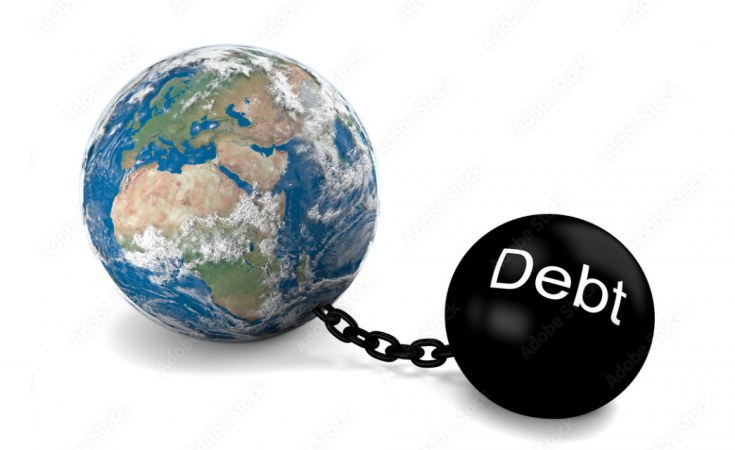Some of the key targets that Uganda had set as part of its earlier grand plan on stemming the high levels of debt were wide of the mark, compounding an already difficult situation for government technocrats, and leaving ordinary Ugandans at the mercy of fate should any external shock such as Covid-19 re-emerge.
Uganda is experiencing unprecedented levels of debt, with the amounts growing at a pace that government had not anticipated. The ministry of Finance, Planning and Economic Development says public debt stood at Shs 93.38 trillion at the end of December 2023, up from Shs 80.77 trillion a year earlier, making it the highest amount ever.
To put this amount of debt in context, it means each Ugandan - be it a 90-year-old woman or a three-month-old baby - has a debt of close to Shs 2 million attached on them, some of which they have to pay. That amount, experts warn, will not drop anytime soon, and that should another crisis such as Covid-19 reappear, many fragile businesses will be bumped off the streets.
A country with a high debt level is usually faced with expensive loans from the commercial banks. Ultimately, this feeds into the inflation print, triggering a rise in the prices of goods and services.
In its earlier debt management strategy, Uganda government officials at the ministry of Finance, had set benchmarks for the level of interest payments it needed to pay, and which loans were maturing within a year. These benchmarks were meant to guide government on the solutions it needed in order to pay off its debt. It has emerged, however, that the government underestimated the gravity of the problem, and that the ceilings it set were easily breached.
According to the recently-released Medium Term Debt Management Strategy for 2024/2025 - 2027/2028 by the ministry of Finance, the government had projected that the interest payments it needed to pay in 2023 would not exceed 2.43 per cent as a percentage of the Gross Domestic Product.
However, that amount reached 2.88 per cent by the end of December 2023, making it hard for government to achieve its objective. According to government, interest payments consumed 22.2 per cent of the national revenue in 2023, compared to 14.2 per cent in 2019.
When it came to debt that was to mature within a year, government had projected that that figure would not surpass 3.17 per cent of the national budget. But in the year to December 2023, that amount was 3.63 per cent.
That government failed to keep its debt levels within the set targets begs a couple of questions: did government miscalculate the gravity of its debt problem? How did Uganda find itself in this situation in the first place?
From the difficulty of failing to raise enough revenue during the difficult Covid-19 period and therefore resorting to borrowing more money from the profit-hungry domestic financial market, to government's reckless expenditure of its loans, there appears to be a raft of reasons as to why Uganda's debt problem will not abate anytime soon.
Top USA-based credit rating agency Moody's, which guides investors on the health and credit profile of economies, says Uganda's overreliance on the domestic financial market and non-concession sources of financing - both of which come with high interest rates on credit - have raised the country's level of debt to unprecedented levels.
Moody's also pointed to last year's decision by the World Bank to halt financing of new projects in Uganda over the country's perceived harsh legislation of the Anti-Homosexuality Act as a factor that has wiped out a substantial amount of cheaper credit.
Other experts also argue that the recent sanctions by the United Kingdom and the United States of America on Anita Among, the speaker of Uganda's parliament - a house that is supposed to pass any loan requests by government - could present a moral question on the lenders, some of whom could shy away.
Moody's, therefore, downgraded Uganda's rating to B3 from B2 recently, further raising fears among international lenders on the country's ability to pay back its loans. In downgrading Uganda's credit rating, Moody's has made it harder for Uganda to access cheaper credit.
What options, then, is Uganda left with to deal with its debt problem? The government, in its medium-term debt strategy plan, wants to limit the amount of loans it sources from the domestic market. One of the reasons for this, beyond the high rates in this market, is to also allow commercial banks more room to lend to the private sector.
Private sector credit boosts business growth, creates employment opportunities and generates tax revenue. Government has placed its hope in the country's oil and gas industry, which currently is at the development stage. Uganda is in the process of commercialising at least 1.4 billion barrels of oil.
The country, together with three other shareholders, is constructing a crude oil pipeline to a port in eastern Tanzania from where the oil will be loaded onto tanks and shipped to the international market.
Uganda has set a target of early 2025 for commercial production of oil to start. However, delays in civil works for the infrastructure of the oil project show that government will not achieve this schedule.
The most feasible option that government is left with then is to raise taxes, and lure more Ugandans into the tax bracket. Moody's stated: "Gradual improvements in revenue mobilisation capacity would, if further sustained, support fiscal consolidation efforts and could eventually provide relief to the debt affordability challenges faced by the government, but face execution risks."
It is envisaged that many Ugandans, who didn't participate in racking up a huge amount of the debts that government grapples with today, will feel cheated when asked to pay the new taxes that are expected to be announced in the new national budget next week. Enforcing these tax proposals is set to come with some resistance.


